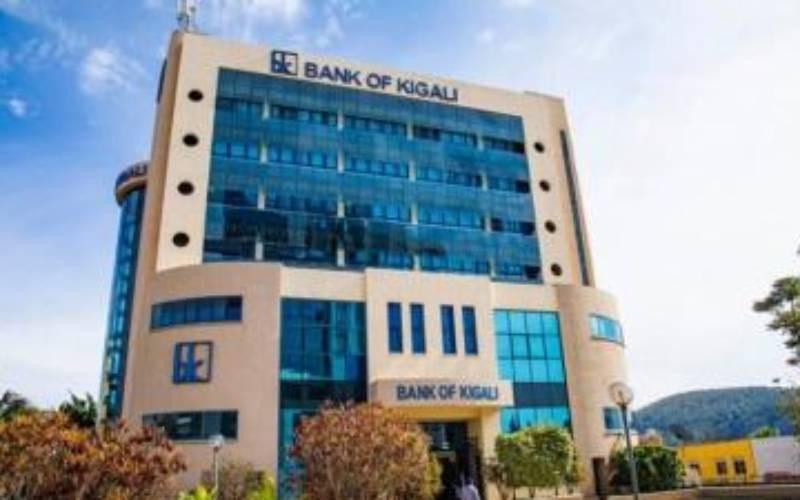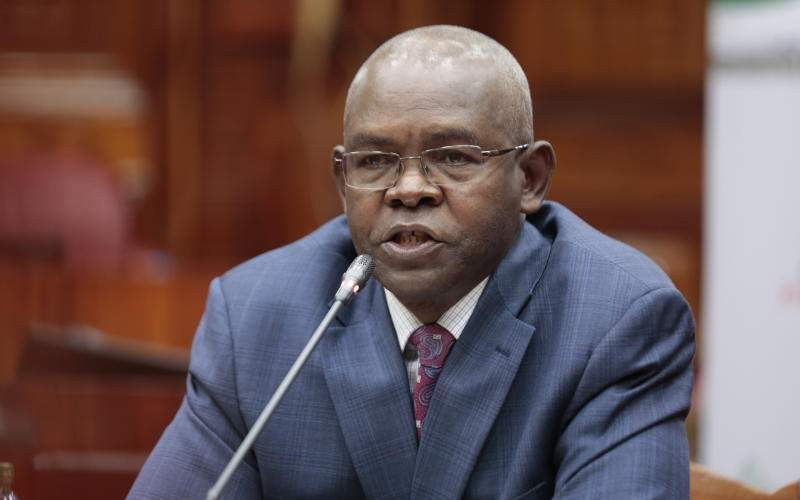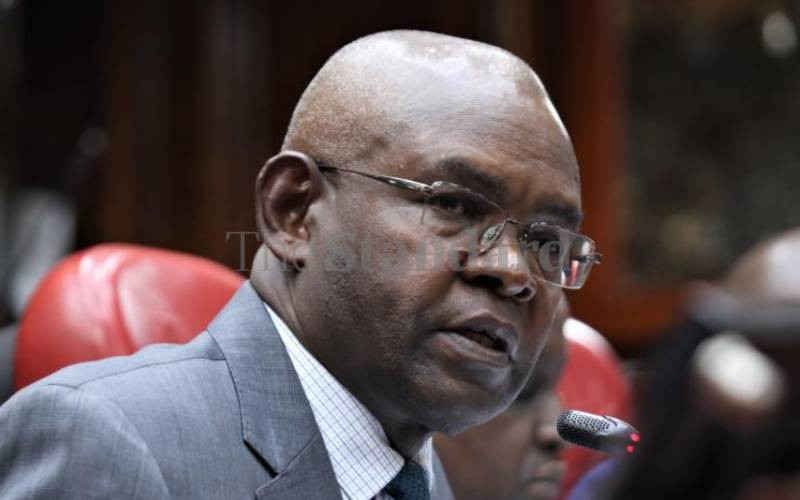If you read major newspaper headlines for the past 11 months whenever the Central Bank of Kenya’s Monetary Policy Committee convened, you will catch one thread - relief as borrowers saved from expensive loans.
The setting of the Central Bank Rate (CBR) has become predictable that it has moved from the newspapers’ front pages to briefs tucked inside business pages.
When the rate capping law was introduced, the CBR became a sensitive figure that reporters would wait late into the day as its news had the potential to set the borrowing agenda of the country.
But after six MPC meetings of keeping the rate consistently at 10 per cent, questions are being raised as to whether the monetary policy makers have any options to move it at all.
“The decision to cap rates has made MPC work very difficult, frankly there is no much room for anything else. They cannot raise because it will drive core inflation and cannot really bring it down because of a negative effect on lending,” said Robert Shaw, a Nairobi-based economist.
Central Bank Governor Dr Patrick Njoroge had initially said there was inadequate evidence to show that the rate cap law had interfered with their work.
“Following the introduction of interest rate caps on bank lending and deposits, the Committee noted that the available data were inadequate to facilitate a conclusive analysis on their impact on monetary policy and the overall economy. CBK will continue to monitor developments in this respect,” said Dr Njoroge in the November 28, 2016 MPC release.
During this meeting, CBK cut the benchmark rate by 50 basis points (from 10.5 per cent to 10 per cent) with the hope of stimulating lending. This however did not materialise. Lending consistently went down by 4.7 per cent in September last year and down to 2.1 per cent in May.
Private sector
Banks were too much concerned about choosing customers and shielding themselves from risky borrowers than listen to what CBK was telling them in the September case, to lend more. “The Rate Cap was the key driver in reducing private sector growth. It’s clear that the issue here is credit granularity,” said Rich Management Chief Executive Aly Khan-Satchu.
This credit crunch has hit most businesses as banks continue to realign themselves to the new reality. “Kenya’s interest rate cap law has had an unexpected negative impact on credit availability for the private sector, especially for small and medium-sized firms. The major concern is that we risk reversing the remarkable increase in financial inclusion observed in recent years in Kenya,” said Chandaria Industries Group CEO Darshan Chandaria.
While Governor Njoroge insists that the policy team’s decision has not yet been hindered by the law, he is quick to add grave concerns if the situation occurred. “We did not get to that point but that has been an issue with the MPC all along,” Dr Njoroge said.
He observed that the MPC communiqué talked about the reasons for holding the rate, which was that inflation is coming down and growth is strong and going in the right direction.
“So in a sense it had nothing to do with the effectiveness of monetary policy which is the big issue we have with the caps,” he said.
The CBK boss observed that since the rate cap is based on the CBR which is set by the MPC team, makes it difficult to achieve what the regulator was achieving in the past.
Stay informed. Subscribe to our newsletter
This is by reducing money in the system when the economy overheats or injecting more money in the system when the economy is slowing down. “The point is the effect of the monetary policy was compromised, we do not know whether tightening means the rates will go down or go up because that is what really it is. In the traditional sense, if you would want to tighten, you would actually push up rates and if you want to loosen you push down rates,” he said. “But now we do not know, I have no clue on whether tightening means raising or lowering rates,” he added.
Asked whether CBK has considered the political implication of raising rates which would allow banks to lend more but anger borrowers, he said the MPC which monitors a whopping 232 macro-indicators on a monthly basis made a decision which had nothing to do with politics.
“Despite how much you want to draw us to politics we will not go there. The economic indicators were dominant so that really hold was the way to go,” he said. What has puzzled analysts is why CBK fully knowing the risk of using CBR as the benchmark rate for the Banking Amendment Act of 2016, went ahead and directed banks to use this rate.
The fact that CBR is used for more factors than just banking business makes it insensitive the peculiarities of the lending sector. When the law was passed and signed last year, it was still ambiguous on which rate will be used to peg the loans.
“A bank or financial institution shall set the maximum interest rate chargeable for a credit facility in Kenya at no more than four per cent, the base rate set and published by the CBK,” the Act by Kiambu Town MP Jude Njomo read.
Kenya Bankers Association (KBA) sought clarification on whether to advice their members to use the CBR or Kenya Banks’ Reference Rate (KBRR) or a totally different rate that will be set by CBK. However, most banks opted to use the CBR, which was at 10.5 per cent when the law was introduced, to determine the cap on loan rates instead of the KBRR, which stood lower at 8.9 per cent.
CBK supported the move and chose CBR as the benchmark. “For the purposes of section 33B of this Act, the base rate is the CBR. The bank shall publish the lowest rate of interest it charges on loans to banks and micro-finance banks, and that rate shall be known as the Central Bank Rate,” the circular dated September 13 read in part.
Early this year, the regulator even did away with KBRR, which was calculated as an average of the CBR and the two-month weighted moving average of the 91-day Treasury bill rate.
“The MPC considered the KBRR which was introduced to provide a transparent credit pricing framework. In view of the adoption of the new law capping interest rates the CBK decided to suspend the KBRR framework,” said Dr Njoroge in the January 30 MPC release.
Lending rates
KBA Chief Executive Habil Olaka had raised a concern that using the CBR will be a nightmare for banks as they may have to adjust their lending rates every time CBK sits for the MPC.
This could be considered that lenders have to give one month notice before raising or lowering rates, making operationalisation difficult. Head of Banking Research at Ecobank George Bodo said CBK should have created another rate to free its monetary policy wing and give banks stability and predictability.
“The apex bank should consider reforming the base rate regime as applicable in the law by introducing three base rates,” he said in a commentary shortly after CBK decided to use the CBR,” said Bodo. “The first base rate should be applicable in unsecured lending products, the second base rate in secured lending products while the third base rate should be for purposes of setting the deposit floor,” Bodo added.
He said the three base rates could then be subject to review after every six months or quarterly to give banks sufficient space to breath-in and breath-out.
“Additionally, these base rates can also be designed in such a manner that they reflect credit and liquidity market conditions. The new base rates will qualify as part of Central Bank’s monetary policy tool kit,” he said.
Mr Satchu however okayed the use of CBR , adding that it is still effective in managing liquidity, especially in the repo (re-purchased securities) transactions.
This could be why pundits want CBK to reconsider its decision to designate CBR as the base rate for purposes of the Banking (Amendment) Act 2016. However, the credit crunch is affecting almost all countries in East Africa according to reports by IMF.
 The Standard Group Plc is a
multi-media organization with investments in media platforms spanning newspaper
print operations, television, radio broadcasting, digital and online services. The
Standard Group is recognized as a leading multi-media house in Kenya with a key
influence in matters of national and international interest.
The Standard Group Plc is a
multi-media organization with investments in media platforms spanning newspaper
print operations, television, radio broadcasting, digital and online services. The
Standard Group is recognized as a leading multi-media house in Kenya with a key
influence in matters of national and international interest.
 The Standard Group Plc is a
multi-media organization with investments in media platforms spanning newspaper
print operations, television, radio broadcasting, digital and online services. The
Standard Group is recognized as a leading multi-media house in Kenya with a key
influence in matters of national and international interest.
The Standard Group Plc is a
multi-media organization with investments in media platforms spanning newspaper
print operations, television, radio broadcasting, digital and online services. The
Standard Group is recognized as a leading multi-media house in Kenya with a key
influence in matters of national and international interest.








